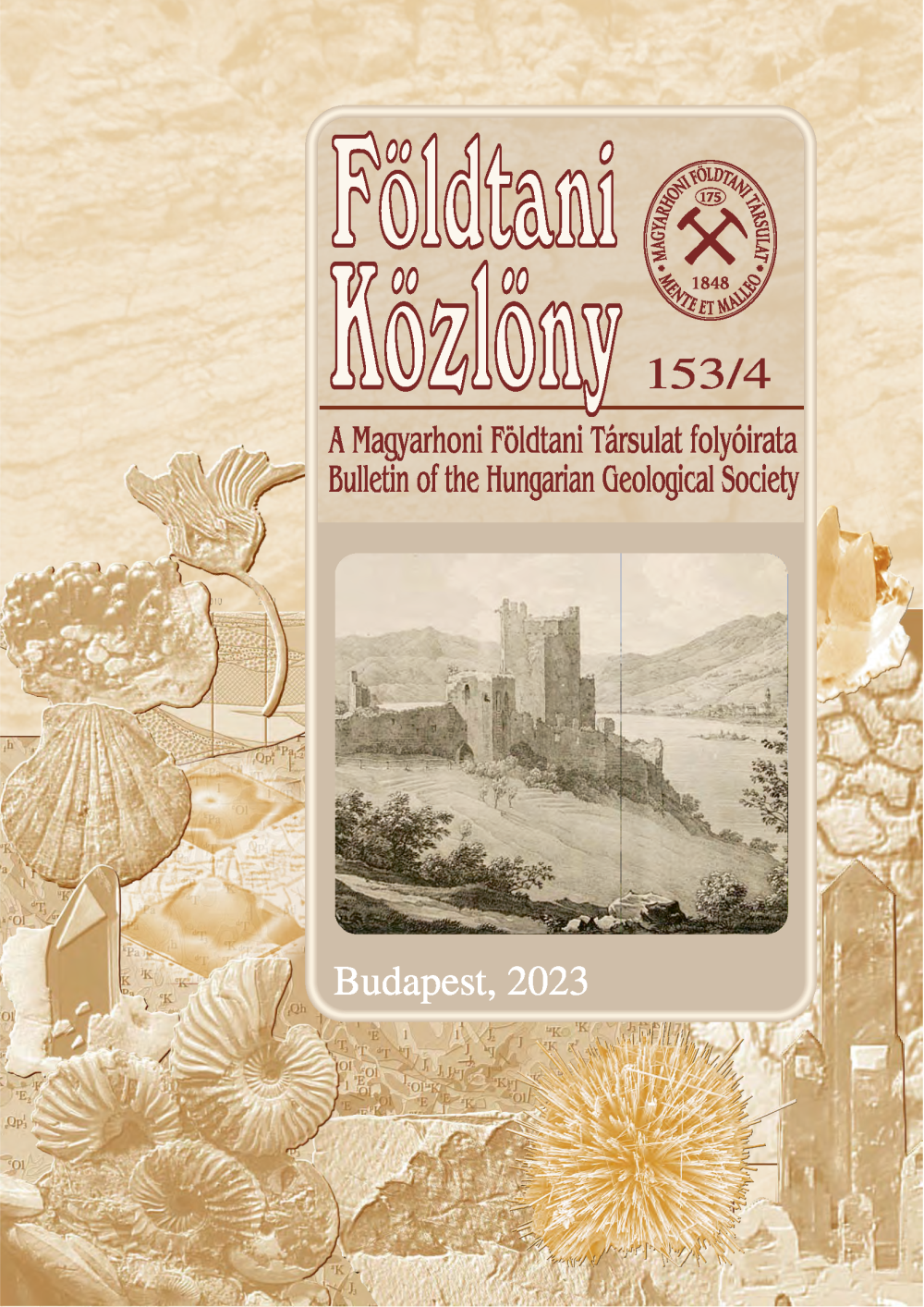The characteristics of the Upper Rhyolite Tuff Horizon in the Bükkalja Volcanic Field: The Harsány ignimbrite unit
Abstract
During the Miocene (between 20 and 13.5 Ma), several rhyolitic explosive volcanic eruptions occurred
in the Pannonian Basin. Based on the K/Ar age dating of the pyroclastics, the palaeontologic, petrologic
and palaeomagnetic studies, the volcanic formations were divided into three separate horizons (Lower,
Middle and Upper Rhyolite Tuff units).
In this work, we study the Late Badenian pyroclastic rocks of the Bükkalja Volcanic Field (BVF), which
were correlated with the Upper Rhyolite Tuff unit of the Pannonian Basin (or Upper Tuff unit in
Bükkalja). We present the results of volcanologie, petrologic and geochemical investigations of two
localities (Harsány and Tibolddaróc) of the eastern Bükkalja and reinterpret both the age and the genesis
of the volcanic formations. We suggest that they represent non-welded pumice block-bearing pyroclastic
flow deposits. The petrography, mineral chemisty, the major and trace element data of pumices, glass
shards and lithic clasts and the new K/Ar age data (Harsány: 13.65±0.72 Ma and Tibolddaróc: 13.35±1.01
Ma) clearly indicate that the two occurrences could belong to the same volcanic eruptions and possibly
to a single pyroclastic flow. We term this volcanic formations as Harsány ignimbrit unit (HIU), a part of
the Upper Tuff unit of the Bükkalja. We note, however, that the Upper Tuff is compositionally
heterogeneous in the BVF, i.e. the HIU show different character compared with the ignimbrites, which
occur at the western part of the BVF (e.g., Demjén, Nagyeresztvény). The HIU can be clearly
distinguished also from the volcanoclastic formations of the Lower and Middle Tuff. Thus, the HIU
represents the eruption of a distinct rhyolitic magma. It is important to note that approximately at the
same time, eruption of different rhyolitic magmas with fairly similar eruptional processes, i.e. plinian
eruption resulted in pumiceous pyroclastic flows, deposited close to one another in Bükkalja.
Our results emphasize that the previously established volcanic units in Bükkalja could be
heterogeneous, i.e. they could represent the volcanic products of different eruptions, possibly fed by
distinct magmas. Furthermore, our data imply that the so-called Upper Rhyolite Tuff unit of the
Pannonian Basin cannot be regarded as a genetically homogeneous marker horizon.











